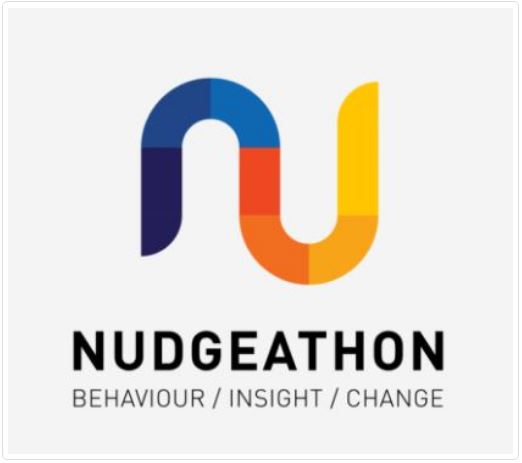Weekly column from Council Courier e-newsletter by Craig Johnstone, Media Executive, Friday, 22 September 2017.
Image above: Warwick University’s Professor Daniel Read (far left), QUT Vice-Chancellor Professor Peter Coaldrake (second from left) and QUT Behavioural Economics Professor Uwe Dulleck (far right) with Nudgeathon winning team the Titanium Nuggets.
Behavioural economics, choice architecture, nudge theory. The lexicon of academia can sound a little daunting. Doubly so to those in local government whose work to better service their community does not allow much time for thinking through a problem differently or collaborating with others to tease out solutions often hiding in the most obvious of places.

But this week, the LGAQ has been involved in an exercise that shows how these high theories of economics and psychology can be applied at the most practical level in local government.
Along with the Federal and state governments, Queensland University of Technology and the Warwick Business School in the UK, we were sponsors of Australia’s first Nudgeathon, a competition to change the behaviours of the community to respond to certain social issues.
Nudgeathon puts teams of university students to work on trying to get such behavioural change to help people make better decisions. In this particular nudgeathon (a play on the better-known concept of a hackathon), the challenge was to lift the number of volunteers in the 18-30 age group.
While many local councils would believe growing the spirit of volunteerism among the young is of enormous benefit to their community, that nut has proved a hard one to crack. Encouraging volunteerism among the young increases skills and fosters the growth of civic responsibility. Its application to local communities is obvious.
 The winning team, the Titanium Nuggets, proposed mining the Go Volunteering initiative’s database and refreshing its website-based platform to ensure the notion of volunteering gained more traction in the target age group. It even included a 'Humans of Volunteering' feature. The team won some cash and a trophy but the most important prize was a chance to pitch its idea to federal government officials looking for sources of investment.
The winning team, the Titanium Nuggets, proposed mining the Go Volunteering initiative’s database and refreshing its website-based platform to ensure the notion of volunteering gained more traction in the target age group. It even included a 'Humans of Volunteering' feature. The team won some cash and a trophy but the most important prize was a chance to pitch its idea to federal government officials looking for sources of investment.
And that is the point of the nudgeathon: proposing ways to influence behaviour and decision making that are far easier to implement than new legislation or enforcing existing rules.
The UK and US governments have employed nudge theory to help bed down policy reform. The Australian Government has also set up a Behavioural Economics team.
Still doubting the impact of nudge economics? Then think of a trip to the supermarket. Products might seem to be arranged on the shelves randomly. But there is one shelf that is highly prized by brands the world over: the one at eye level.